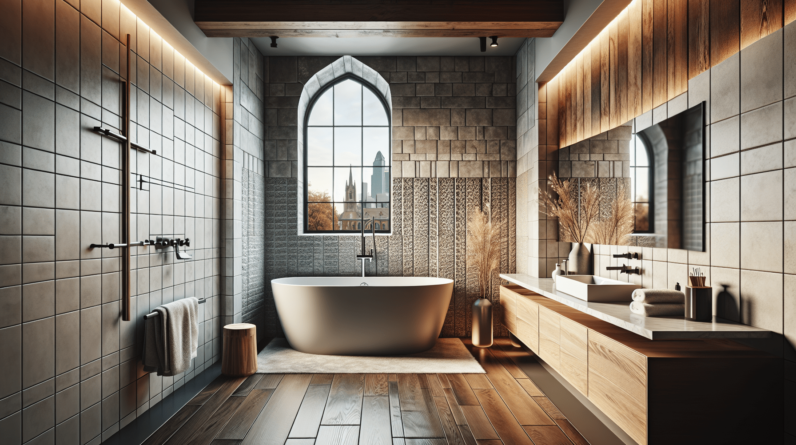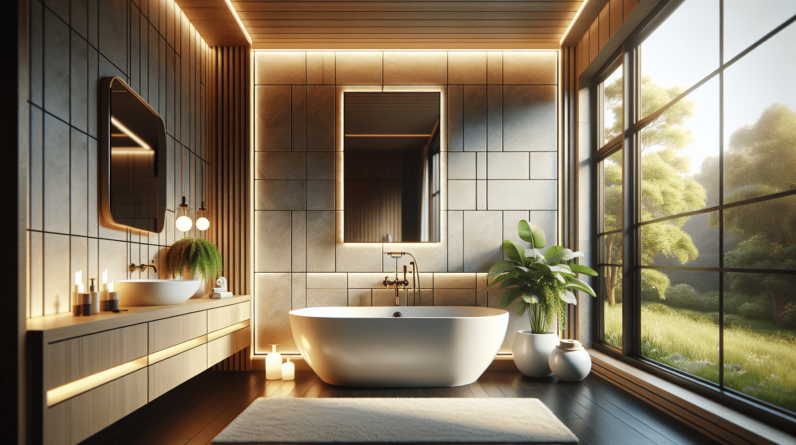

Have you been thinking about giving your bathroom a fresh look without breaking the bank? You’re not alone! Many homeowners dream of a beautiful bathroom but worry about the costs involved. Fortunately, affordable bathroom remodeling is possible with some smart planning and creativity.
Understanding Bathroom Remodeling Costs
Before you jump into a remodeling project, it’s essential to understand what costs you might be dealing with. The bathroom is often one of the smallest spaces in your home, but it can also be one of the most expensive to renovate.
Breakdown of Common Costs
- Labor: The cost of hiring a contractor can vary significantly based on your location and the complexity of the project. Generally, labor can account for 20-35% of the overall budget.
- Materials: This includes everything from tiles and cabinetry to fixtures like sinks and toilets. Choose wisely, as high-end materials can quickly inflate your budget.
- Permits: Depending on your local regulations, you may need permits for plumbing or electrical work. Always check beforehand to avoid unexpected fees.
- Design and Planning: If you’re hiring a designer, their fees will also factor into your costs. However, many find that a well-thought-out plan can save money in the long run.
Average Costs of Bathroom Remodeling
It’s helpful to know the average cost for bathroom renovations in your area. Here’s a rough estimate of what you might expect based on the type of remodel:
| Type of Remodel | Average Cost |
|---|---|
| Minor Remodel | $2,500 – $10,000 |
| Mid-Range Remodel | $10,000 – $25,000 |
| High-End Remodel | $25,000+ |
These figures can change based on factors like size, location, and personal choices.
Setting a Budget
Once you have a clearer understanding of the costs, the next step is to set your budget. Establish a realistic financial plan that considers both your needs and desires.
Tips for Budgeting
- Prioritize Needs Over Wants: Determine what’s essential for your bathroom and what can wait.
- Include a Contingency Fund: It’s wise to set aside 10-20% of your budget for unexpected expenses.
- Research Materials: Look for cheaper alternatives that can provide a similar aesthetic. For example, consider laminate countertops instead of granite.
Cost-Saving Strategies
Remember, just because you want a beautiful bathroom doesn’t mean you have to spend a fortune. Here are some ways to save:
- Refinish Instead of Replacing: Consider refinishing your bathtub rather than purchasing a new one.
- Shop Sales and Discounts: Keep an eye out for sales at your favorite home improvement stores. Holidays often bring excellent deals!
- DIY Where Possible: If you have a knack for home improvement, take on small projects yourself to save money on labor.

Choosing the Right Design
The design of your bathroom can make a significant difference in both aesthetics and functionality.
Styles to Consider
- Modern: Clean lines and minimalist features characterize modern bathrooms. Think bold colors and high-tech fixtures.
- Traditional: This style brings warmth with classic designs and vintage-style fixtures.
- Eclectic: Combine different styles and textures to create a unique, personalized space.
Planning Your Layout
Consider the flow of your bathroom. A well-thought-out layout can greatly enhance functionality. Keep these points in mind:
- Placement of Fixtures: Think about where the sink, toilet, and shower or bathtub will go.
- Storage Solutions: Adequate storage will keep your bathroom clutter-free, so explore options like vertical storage and built-in shelving.
Selecting Quality Materials
When it comes to your bathroom remodel, choosing the right materials is crucial. Not only will they affect the look of your space, but they can also impact longevity and maintenance.
Types of Materials
- Tiles: Ceramics and porcelain are popular choices for flooring and walls. They’re durable and easy to clean.
- Countertops: If you choose stone, consider the maintenance involved. Granite may require sealing, while quartz is often more resilient.
- Fixtures: Opt for water-efficient fixtures to save on utility bills over time.
Balancing Cost and Quality
You don’t always have to opt for the cheapest option, but finding a balance is key. Some strategies to ensure value:
- Mid-Range Materials: These can save you money while still providing durability and style.
- Warranty Considerations: Investing in products with good warranties can mean savings in the long run.

Hiring the Right Professionals
If your project requires more than just a little paint, hiring skilled professionals can be vital. However, it’s important to find the right person for the job.
Finding a Contractor
- Research: Check reviews and ask for recommendations from friends or family.
- Get Multiple Quotes: Comparing several quotes can help you find the best rate.
- Verify Credentials: Ensure that any contractors you consider are properly licensed and insured.
Working with Designers
A good designer can help you maximize your space and minimize costs. Look for someone who understands your vision and can work within your budget.
DIY vs. Hiring Help
One of the most debated topics in remodeling is whether to do it yourself or hire professionals.
Pros and Cons of DIY
Pros:
- Cost Savings: Doing the work yourself can significantly cut costs.
- Personal Satisfaction: There’s a certain pride in completing a project on your own.
Cons:
- Time-Consuming: Remodeling can take a lot longer when you’re learning as you go.
- Risk of Errors: Lack of experience can lead to mistakes that end up costing more to fix.
When to Hire Help
Certain tasks are often best left to the professionals, such as plumbing and electrical work. If you aren’t confident in your skills or lack the necessary tools, it may be wise to seek a contractor.
Sustainable Choices
More and more homeowners are looking at ways to incorporate sustainability into their remodeling projects.

Eco-Friendly Materials
Consider using sustainable materials, which may be cheaper in the long run due to their durability:
| Sustainable Material | Benefits |
|---|---|
| Bamboo Flooring | Renewable resource, attractive |
| Recycled Glass Tiles | Unique appearance, environmentally friendly |
| Low-VOC Paints | Healthier air quality, less harmful |
Water-Saving Fixtures
Investing in water-efficient toilets, showers, and faucets can significantly reduce water usage and costs over time.
Adding Finishing Touches
Sometimes, it’s the little details that make the biggest impact.
Accessorizing Your Bathroom
- Lighting: Good lighting can make a space feel bigger and more inviting. Consider layering different types of lighting for versatility.
- Textiles: Fresh towels, and shower curtains, or even a new rug can give your bathroom a completely different feel.
- Art and Décor: Adding personal touches like artwork or decorative items can make your bathroom a more enjoyable space.
Creating a Cohesive Look
Make sure all your elements work together by choosing a color palette that harmonizes with your overall design theme.
Maintenance Tips for Your New Bathroom
You’ve invested time and money into creating a lovely bathroom, so it’s essential to keep it in top shape.
Regular Cleaning
Establish a cleaning routine that includes:
- Weekly: Wipe down surfaces and clean the toilet.
- Monthly: Scrub tiles and grout to prevent mildew buildup.
- Seasonal: Check for leaks and inspect the plumbing.
Minor Repairs
Taking care of small repairs immediately can save you from larger issues down the road. Always keep an eye out for:
- Leaky Faucets: Replace washers as soon as you notice a leak.
- Caulk Aging: Reseal any areas where caulk is peeling or cracking.
Conclusion
Giving your bathroom a facelift doesn’t have to be an overwhelming or expensive endeavor. With careful planning, smart budgeting, and a good eye for design, you can achieve a beautiful remodel that fits your style and financial needs. Always remember to find the right balance between cost and quality, and don’t hesitate to seek help when necessary.
By following these steps and tips, you can enjoy your new bathroom for years to come, all while keeping your budget intact. Happy remodeling!






